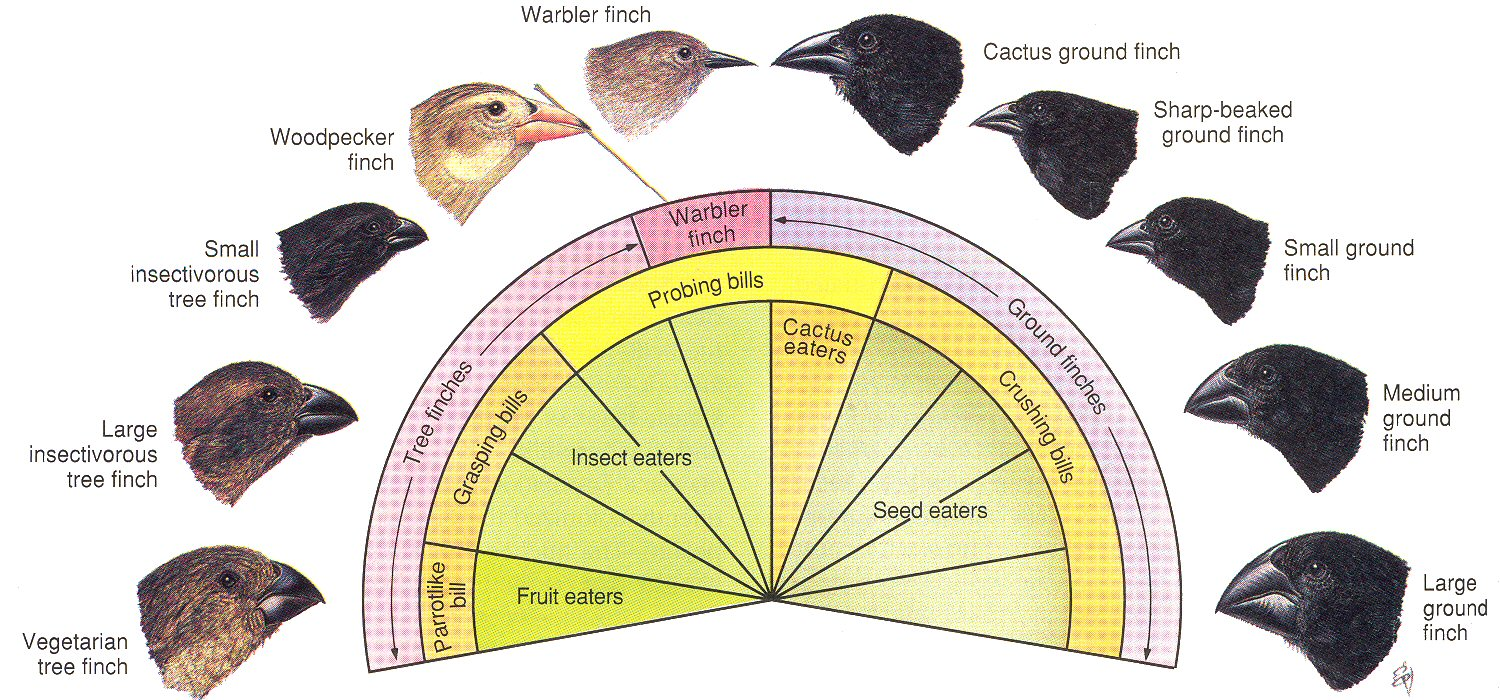The discovery of microRNA in the 1990s by researchers Gary Ruvkun and Victor Ambros has reshaped our understanding of genetic regulation, culminating in a well-deserved Nobel Prize in physiology in 2024. Initially met with skepticism, their groundbreaking work—primarily funded by the NIH—showed how tiny RNA molecules play crucial roles in gene expression and developmental biology across various organisms. As the field of RNA research gained traction, it became evident that microRNAs were far more significant than previously imagined, drawing attention from a wider scientific community. This pivotal discovery has not only advanced our biological knowledge but also sparked innovative therapies for diseases such as cancer and heart disease, highlighting the profound impact of federal funding on scientific progress. Today, microRNA stands at the forefront of genetic research, promising new insights into the complexities of human health and disease.
The field of small RNA research has gained immense recognition over the years, primarily due to the landmark findings of microRNA, a class of non-coding RNA molecules that regulate gene expression. The evolution of this area of study, initiated by scientists like Gary Ruvkun, showcases the critical importance of these tiny regulatory elements in biological systems. As researchers delve deeper into the mechanisms of RNA biology, they uncover the intricate networks that control various physiological processes and disease states. Moreover, the financial support from institutions such as the NIH has been vital in fostering breakthroughs that lead to potential therapeutics and broaden our understanding of genetic mechanisms. Thus, the exploration of microRNA and its impact reflects a broader narrative about the integration of fundamental science and public funding in driving innovation in health and medicine.
The Revolutionary Discovery of microRNA
In the early 1990s, Gary Ruvkun and Victor Ambros made a groundbreaking discovery in the field of genetics with the identification of microRNA. Initially dismissed by some, their research revealed that these small RNA molecules play a crucial role in the regulation of gene expression, specifically in the model organism, C. elegans. This landmark find, published in the prestigious journal Cell, set the stage for a significant shift in how genetic regulation was understood, particularly highlighting the complexity of gene interactions that were previously overlooked.
As interest in microRNAs grew, the implications of their research extended beyond the confines of simple gene regulation. Ruvkun and Ambros’s findings catalyzed an explosion of subsequent studies that demonstrated the universality of microRNA function across different species, including humans. This shift in perspective marked the beginning of a new era in molecular biology, placing a spotlight on the vital roles tiny RNAs play not just in development but also in disease processes, thereby fundamentally reshaping existing paradigms of genetic research.
The Impact of NIH Funding on RNA Research
Gary Ruvkun’s journey in RNA research has been significantly influenced by National Institutes of Health (NIH) funding. For over four decades, Ruvkun has relied on federal grants to support his groundbreaking work, reflecting a critical need for sustained investment in science. The NIH funding not only allows researchers to explore novel ideas but also enables the cultivation of new talent in the field, providing them with the necessary resources to investigate complex biological questions.
The impact of this funding is palpable, with Ruvkun noting that the majority of his lab workforce are highly educated scientists, contributing valuable insights into microRNA’s role in various health conditions. This federal investment contributes to a broader ecosystem that supports scientific breakthroughs, as evidenced by the rise of companies like Alnylam, which have emerged from foundational research backed by NIH funding. Ruvkun’s emphasis on the importance of such financial support underscores the potential consequences of budget cuts, which could stifle innovation and result in brain drain as young scientists look for more stable opportunities elsewhere.
The Journey from Discovery to Nobel Prize
Gary Ruvkun’s recognition by the Nobel Committee in 2024 represents a culmination of years of perseverance and dedication in the realm of genetic research. Although his discovery of microRNA initially went uncelebrated, the eventual accolades reflect the transformative impact that these small molecules have had on our understanding of biology. The journey from obscurity to Nobel Prize honors serves as a testament to the importance of rigorous scientific investigation backed by solid funding and collaborative discourse within the scientific community.
The Nobel Prize not only validates Ruvkun’s contributions but also highlights the significance of persistence in research, especially when initial findings do not garner immediate excitement. His experience illustrates how foundational discoveries can lead to enormous advancements over time, influencing a wide array of fields from molecular biology to therapeutic development. As society gradually becomes cognizant of the implications of microRNA in health and disease, Ruvkun’s legacy and his collaborations with fellow researchers will continue to inspire future generations.
MicroRNA and Genetic Regulation
The discovery of microRNAs has revolutionized our understanding of genetic regulation. Originally deemed minor players in the vast landscape of gene expression, microRNAs are now recognized for their ability to modulate the stability and translation of mRNA, effectively influencing protein levels in organisms. This layer of genetic regulation is critical, as it adds complexity to the already intricate network of gene interactions that govern cellular function and organismal development.
Emerging research demonstrates that microRNAs are involved in a plethora of biological processes, including development, differentiation, and disease pathology. Their dysregulation has been linked to several conditions, including cancer and neurodegenerative diseases, underscoring their importance in maintaining homeostasis within biological systems. As scientists continue to unravel the intricate roles of microRNAs, opportunities for novel therapeutic approaches arise, with ongoing clinical trials exploring their potential in treating various illnesses.
Ruvkun’s Perspective on Scientific Funding
Through his extensive career, Gary Ruvkun has been a staunch advocate for continuous governmental support in scientific research. He argues that federal funding has been the backbone of modern scientific achievements, particularly in the realm of genetics and molecular biology. With an annual average grant of approximately $150,000, Ruvkun notes that such funding has allowed him to sustain a focused and effective research team, contributing to significant breakthroughs in our understanding of microRNA.
Ruvkun’s concerns about potential cuts to federal funding echo larger conversations within the scientific community regarding the future of research in the United States. He asserts that reducing financial support risks not only the immediate welfare of researchers but also the long-term innovation pathways that drive scientific and economic growth. As new generations of scientists ponder their career prospects, Ruvkun emphasizes the necessity of a robust investment framework to attract and retain talent within the field.
Transformative Therapies Through microRNA Research
The implications of microRNA research extend far beyond our understanding of genetics; they have catalyzed the development of innovative therapeutic strategies aimed at treating various diseases. Insights gained from studying microRNAs have paved the way for potential treatments for conditions such as cancer, heart disease, and neurodegenerative disorders like Alzheimer’s. These small molecules are being harnessed not only to understand disease mechanisms but also to develop RNA-based therapies that can target specific genetic pathways.
As of now, numerous clinical trials are underway, evaluating the therapeutic potential of manipulating microRNA pathways to treat an array of conditions. Companies such as Alnylam have emerged from this rich field of research to commercialize discoveries, emphasizing the profound impact that basic science can have on healthcare. The journey of microRNAs from lab benches to bedside exemplifies the fruition of basic research, demonstrating how foundational studies transform our approach to medicine.
The Ripple Effect of MicroRNA Discoveries
The discovery of microRNA has sparked a ripple effect throughout the scientific community, inspiring a wide range of research collaborations and innovations. With researchers across diverse disciplines engaging with the concept of microRNA, interdisciplinary dialogues have flourished, leading to comprehensive insights into gene regulation and cellular behavior. This interconnectedness within the scientific community serves to enrich research, enabling scientists to address complex biological questions from multiple angles.
As microRNA research continues to evolve, its implications are seen in various fields, from agriculture, where it aids in enhancing crop resilience, to cancer research, guiding therapies that target oncogenes. The versatile nature of microRNA has established a platform that fosters cross-disciplinary research, emphasizing the importance of continued exploration of this concept. Discoveries made today are likely to inform the next generation of scientific inquiry, showcasing the enduring impact of foundational research in shaping future advancements.
Challenges and Future Directions in microRNA Exploration
Despite the remarkable strides made in microRNA research, challenges remain in fully understanding their intricate roles within biological systems. One of the main hurdles is comprehensively mapping the extensive network of interactions that microRNAs have with both their target mRNAs and other regulatory molecules. As research progresses, the complexity of these interactions poses questions about the specificity and efficiency of microRNA regulation in diverse contexts, which must be addressed to unlock their full therapeutic potential.
Looking ahead, future directions in microRNA exploration will likely focus on elucidating their functional roles in various diseases, improving methods for delivery of RNA-based therapies, and fine-tuning approaches to target specific genetic pathways. As researchers continue to unravel these complexities, the promise of microRNA as a tool in genetic regulation and therapeutic intervention is substantial. The ongoing commitment from funding bodies, alongside the collaborative efforts of the scientific community, will be crucial as we navigate the factors influencing both basic and applied aspects of microRNA research.
The Legacy of Gary Ruvkun in the RNA Community
Gary Ruvkun’s contributions to the field of RNA research extend far beyond his discovery of microRNA. His dedication to advancing our understanding of genetic regulation has nurtured an entire community of scientists who are building on his foundational work. As one of the early visionaries in the microRNA discovery, Ruvkun has influenced countless research trajectories, inspiring new generations to explore the cellular mechanisms that govern life.
His recognition with the Nobel Prize not only honors his significant contributions but also reaffirms the importance of curiosity-driven research in driving scientific advancement. Ruvkun’s legacy is characterized by his commitment to mentorship and collaboration, a philosophy he advocates for within the scientific community. As new breakthroughs continue to emerge in RNA research, Ruvkun’s impact will undoubtedly resonate, propelling the field into an exciting future rooted in discovery and innovation.
Frequently Asked Questions
What is microRNA discovery and why is it important in genetics?
MicroRNA discovery refers to the identification and understanding of small RNA molecules, known as microRNAs (miRNAs), that play crucial roles in gene regulation. Discovered in the early 1990s by scientists like Gary Ruvkun, microRNAs are essential for controlling protein synthesis and cellular development, influencing processes that are fundamental to human health and disease.
How did Gary Ruvkun contribute to the field of microRNA research?
Gary Ruvkun, along with Victor Ambros, made groundbreaking contributions to microRNA research by discovering these small RNA molecules in the C. elegans model organism. Their findings, published in 1993, showcased a new level of genetic regulation that has since influenced various fields of RNA research and earned them the 2024 Nobel Prize in physiology or medicine.
What impact has NIH funding had on microRNA discovery?
NIH funding has been pivotal in advancing microRNA discovery and research. Gary Ruvkun’s work, primarily supported by federal grants, exemplifies how consistent financial backing allowed for significant breakthroughs in understanding gene regulation, leading to therapeutic advancements for diseases like cancer and Alzheimer’s.
How are microRNAs involved in RNA research?
MicroRNAs are a central focus of RNA research as they regulate gene expression by inhibiting protein production. The growing interest in microRNA functions across species has led to expanded studies in molecular biology and genetics, influencing therapies and our understanding of various diseases.
What are the therapeutic applications of microRNAs in medicine?
MicroRNAs have therapeutic potential in treating various diseases, including cancer, heart disease, and neurological disorders. They are currently being investigated in clinical trials for their ability to regulate genes involved in these conditions, reflecting the significant role that microRNA discovery plays in modern medicine.
What recognition did Gary Ruvkun receive for his role in microRNA discovery?
Gary Ruvkun was awarded the 2024 Nobel Prize in physiology or medicine alongside Victor Ambros for their foundational work in microRNA discovery. This prestigious award highlights the importance of their research in shaping our understanding of genetic regulation and its implications for human health.
What is the future of microRNA research following its initial discovery?
The future of microRNA research is promising, with ongoing studies aiming to explore new therapeutic applications and deeper insights into gene regulation. With continued NIH funding and interest from the scientific community, microRNAs are expected to play a pivotal role in advancing genetic and medical research.
| Key Point | Details |
|---|---|
| Discovery of microRNA | Made by Gary Ruvkun and Victor Ambros in 1992, published in 1993. |
| Early Reception | Initially, the work was not well-recognized; considered minor within evolutionary biology. |
| Funding and Support | Research funded primarily by federal NIH grants. |
| Growth of Interest | The field saw increased interest, with meeting attendance doubling over years. |
| Impact of microRNAs | MicroRNAs are crucial for gene regulation and have applications in treating various diseases. |
| Contribution to Science | Ruvkun emphasizes the importance of federal funding for scientific breakthroughs. |
Summary
MicroRNA discovery has proven to be a pivotal advancement in molecular biology, transforming our understanding of gene regulation. Gary Ruvkun’s initial work alongside Victor Ambros in the 1990s laid the groundwork for this essential area of research, leading to significant progress in therapeutic applications. As microRNAs continue to unveil their roles in human biology and disease, the journey from obscurity to Nobel recognition highlights the importance of sustained investment in scientific research.


